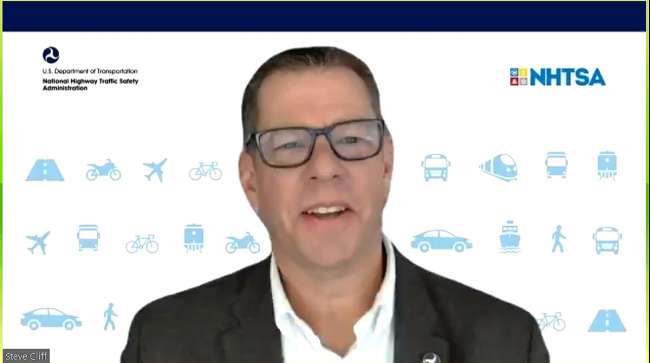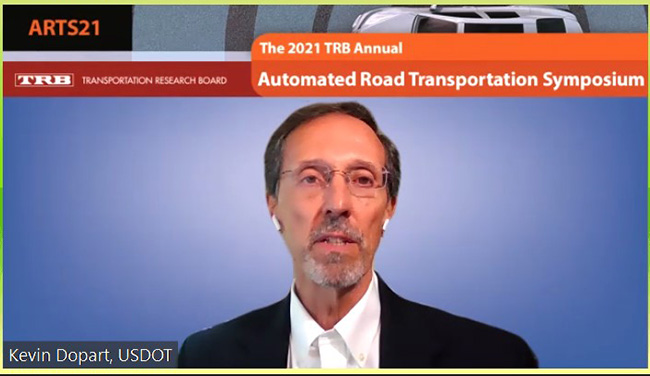Staff Reporter
DOT Officials Offer Overview of Automated Vehicle Testing

[Stay on top of transportation news: Get TTNews in your inbox.]
Commercial trucking operations are included in the slew of connected and automated vehicle testing activities the federal government is currently pursuing.
Kevin Dopart, program manager for connected vehicle safety and automation at the U.S. Department of Transportation’s Intelligent Transportation Systems Joint Program Office (ITS JPO), offered an overview of testing initiatives July 15 at the Transportation Research Board’s Automated Road Transportation Symposium.
Housed within the Office of the Assistant Secretary for Research and Technology, the ITS JPO’s purpose is to spur the development of intelligent transportation systems to move people and goods more efficiently.
In the heavy freight sector, Dopart mentioned a project led by the Federal Motor Carrier Safety Administration and the Virginia Tech Transportation Institute to develop a concept of operations for managing mixed fleets.
“The desired outcome is a playbook, a guide for carriers who are looking to make decisions to incorporate [automated driving systems] in their fleets,” Dopart said.

Dopart highlighted a project through FMCSA and Virginia Tech Transportation Institute regarding managing mixed fleets. (Transportation Research Board)
Also, FMCSA is working with NHTSA to research brake and sensor performance and maintenance for ADS-equipped commercial motor vehicles, according to Dopart.
At the Federal Highway Administration, one ongoing project is a truck platooning effort along a stretch of Interstate 10 running from California to Texas. Dopart said final safety testing will occur either late summer or early fall. He said the team is planning to conduct operational field tests late fall or early winter.
ADS will be a federal focus over the next four years, according to Steven Cliff, acting administrator of NHTSA. Cliff delivered remarks at the event prior to Dopart’s presentation. He noted the COVID-19 pandemic offered opportunities for automated systems to be used and appreciated, such as through contactless delivery methods.

How do you care for your tires? Host Michael Freeze sets out to answer what factors fleets should consider when investing in TPMS and ATIS. He's joined by Matt Wilson of Hendrickson. Hear a snippet above, and get the full program by going to RoadSigns.TTNews.com.
Besides acknowledging technology-related concerns such as privacy and cybersecurity, Cliff recognized ADS systems’ potential to shift roles within the transportation workforce.
“We’re optimistic about the ultimate impacts of widely deployed mature systems on safety,” Cliff said. “We’re hopeful that the labor impacts of job losses in commercial drivers can be offset by job opportunities, particularly in the emerging mobility-as-a-service field and in robotics and related support systems.”
On June 29, NHTSA issued a “standing general order” requiring manufacturers and operators of vehicles equipped with SAE Level 2 driver assistance systems or SAE Levels 3-5 ADS to report crashes.
“That action will improve both safety and transparency by providing the agency with critical and timely data that will also be made available to the public,” Cliff said. “It’s data that drives everything that we do.”
Want more news? Listen to today's daily briefing below or go here for more info:




